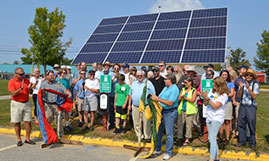Food Security
In 2021-2023, the share of Mainers experiencing food insecurity rose by almost one percentage point.
No significant movement since the last available data
Benchmark: Maine’s percentage of food insecure households will decline to the U.S. average by 2030.
Overview
Food insecurity has broad negative impacts on health, child development, education outcomes, and productivity. Food-insecure households have disrupted eating patterns, reduced food intake, and reduced quality or variety of diet.
According to the U.S. Department of Agriculture, about one in nine Maine households (10.9%) was food insecure in 2021-2023, up from 9.5% in 2019-2021. This increase may reflect the cessation of pandemic-era federal supports for low-income households, such as the expanded Child Tax Credit, and new restrictions to the Supplemental Nutrition Assistance Program (SNAP). Maine’s rate of food insecurity was below the national average of 12.2% and above the New England unweighted average of 9.5%.
County-level data are from a different source with a slightly higher estimate of food insecurity (13% for Maine in 2022). According to Feeding America, 2022 food insecurity ranged from 10.6% in Cumberland County to over 16% in Aroostook, Piscataquis, Somerset, and Washington counties.
Fig. A
On mobile? Viewing this data is easier at a computer.
Food Insecure Households (Three-Year Average)
Source: U.S. Department of Agriculture, Feeding America
Fig. B
On mobile? Viewing this data is easier at a computer.
Food Insecurity Rate by County 2022
Source: Feeding America







